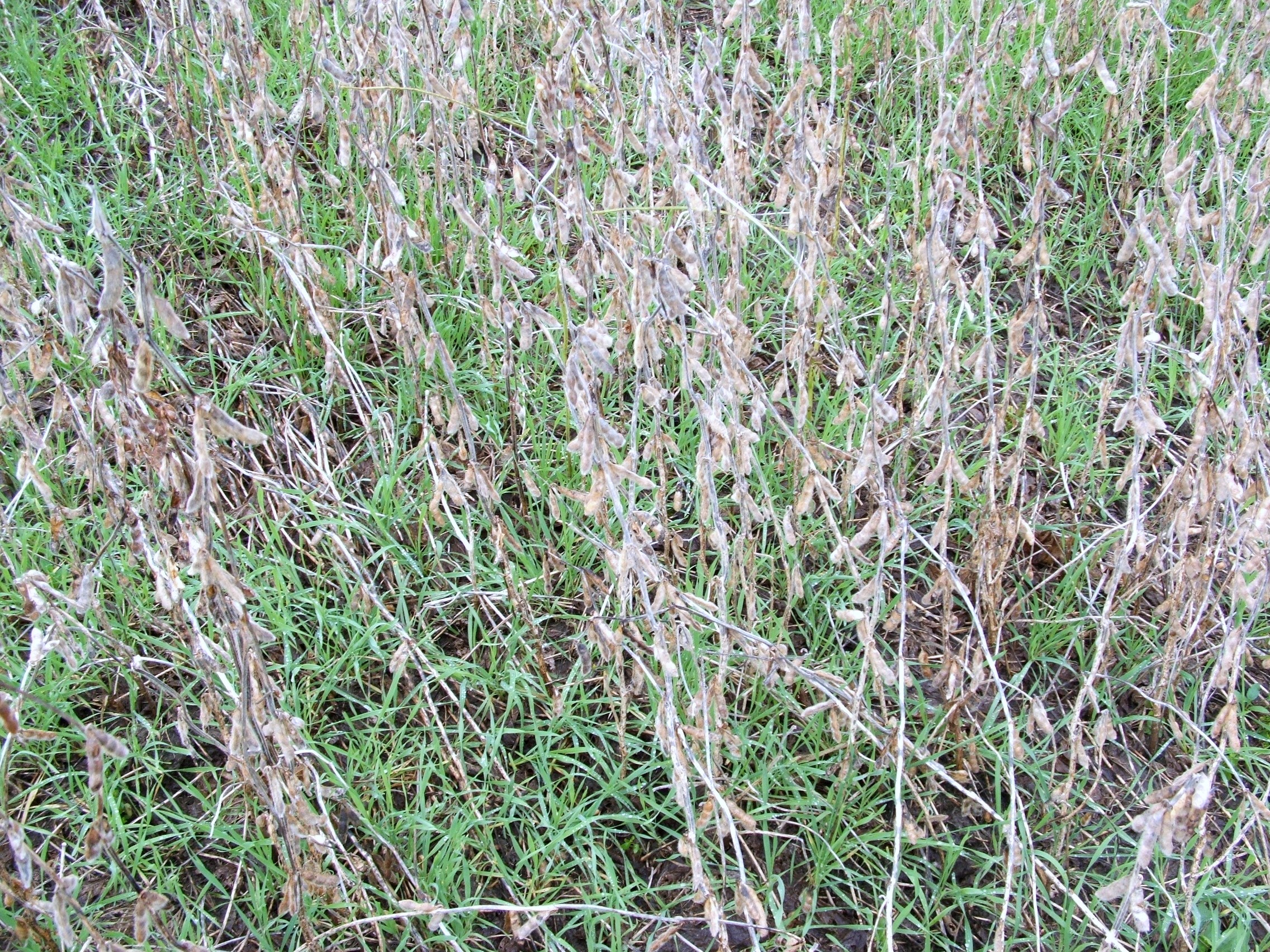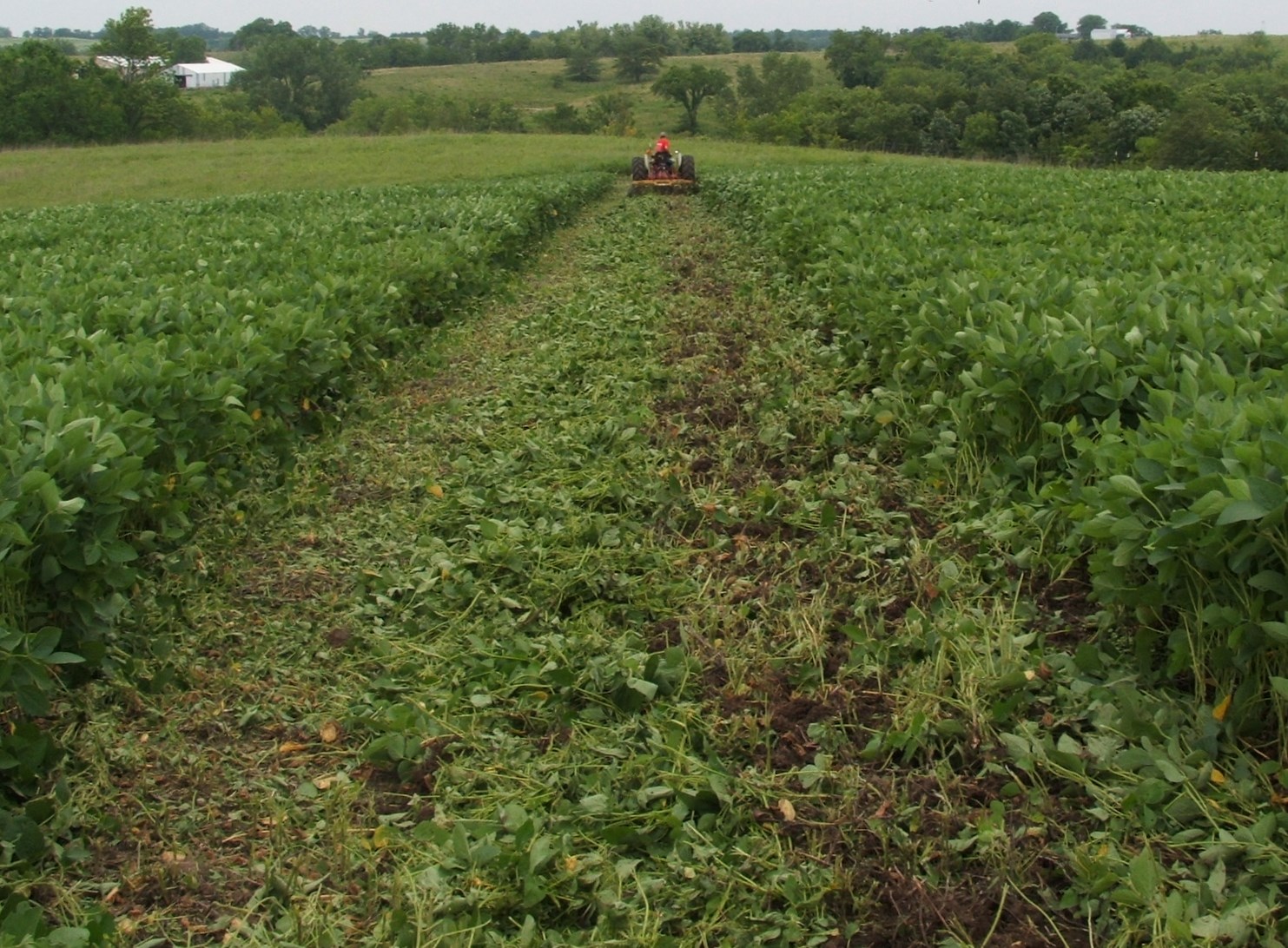Whitetails 365 May-Cover Crops and Nitrogen Fixation (A version of this article is printed in the May 2016 issue of Iowa Sportsman)
I apologize upfront. Many hunters and land managers find the subject of cover crops, green manure, and nitrogen fixation as boring. I guess it can be. These are the kinds of subjects that get very little if any air time on TV or in the hunting videos. Let’s face it, this subject just doesn’t sell! In fact, the whole purpose of planting cover crops or taking advantage of nitrogen fixation is to ultimately save you money and to help you grow great food plots. Incorporating cover crops as green manure and understanding nitrogen fixation will not only save you money (lots and lots of money) but will also help you attract and hold deer on your property year round. When done right, your costs will go down, soil fertility will improve, erosion will be a thing of the past, weeds will be suppressed, and plants will grow bigger and better. Saving money will allow you to focus wasted resources on other things for your hunt. Having better food plots will attract and hold more deer on your farm. Boring…maybe? But if you want to manage your hunting grounds for their biggest potential this is exciting stuff!
Nitrogen Fixation and Food Plots Nitrogen is arguably the most desired mineral in our soils. It is also the element that is usually the most lacking, or is not available for plant uptake. Nitrogen is essential for healthy plants and vigorous growth and is a necessary ingredient for photosynthesis to take place. Nitrogen is a major component of chlorophyll the compound plants use to convert sunlight energy into sugars. It is also necessary in the process of building proteins…without proteins plants die. In short, plants need nitrogen. Unfortunately, nitrogen fertilizer is expensive. So expensive, that it literally makes some food plots like corn cost prohibitive. Urea nitrogen for example (at the time of writing this article) is about 40 cents/pound of actual nitrogen when purchased in bulk form by the ton. For food plotting it costs even more. Food plots like corn and brassicas are heavy nitrogen users which could make them expensive to plant if you want a good crop.
Most plants need to get their nitrogen from the soil through uptake. This means the soil has to have readily available nitrogen in a form the plant can use. Most nitrogen in the soil is bound up in unusable mineral form so the plant can’t use it until the mineral breaks down. Nitrogen in the air makes up about 80% of the atmosphere…but it too is not available to plants in the gaseous form of N2. Plants need nitrogen in usable forms like ammonia. Nitrogen fixation is the process that changes gas N2 in the air into NH3, or ammonia. This process in nature is made possible by nitrogen fixing rhizobia bacteria. When the bacteria die, they release nitrogen in a usable form; or when other plants grow very near these bacteria they can share some of the nitrogen that is fixed. Legumes have a special relationship with these bacteria which allows them to fix nitrogen or convert gaseous nitrogen in the air into plant usable forms. The nitrogen fixed by legumes is mostly used by the plant itself in a partnership between the plant and the bacteria.
In legumes, the bacterium grows in colonies or nodules in and around the roots of the plants. In order for legumes to fix nitrogen, the specific strain of rhizobia bacteria must be present in the soil. This is what inoculation of legume seeds is all about…supplying the seed with the necessary bacteria at planting. Grain legume crops like soybeans, cowpeas, and peanuts produce enough nitrogen to supply all the needs of the plants other than what is taken up from the soil. Thus, nitrogen fertilizer is seldom needed in these crops. Forage legumes like alfalfa, clover, and vetch can fix tremendous amounts of nitrogen, as much as 250-500 pounds/acre and like grain legumes don’t require N fertilizer. Because the plants themselves use the nitrogen they fix, how then do we get the nitrogen into the soil in a usable form for other plants?
Some nitrogen a legume fixes can leak into the soil and be used by other surrounding plants. This is minimal but can be about 30-50lbs/acre. Since almost all the nitrogen fixed by legumes is used by the plants themselves, the only way to release the nitrogen for other plants to use is by tilling the legumes into the soil as green manure. In grain legumes, the nitrogen is removed from the field when the crop is harvested (soybeans for example). The residue left behind has about as much nitrogen as non-legume residue. Thus, if you desire to use grain legumes as a way to provide nitrogen for successive crops, you must till under the plant while it is green…crop and all. Forage legumes are very similar in that the nitrogen is contained in the plants stems, leaves, and roots. To make the fixed nitrogen available, you must till under the green plants. In each case, the nitrogen is released from the legume plant and crop when it dies and decomposes. The amount of nitrogen a legume can fix depends on the plant. Alfalfas, clovers, and vetch’s can fix 100-500lbs/acre while soybeans fix as much as 150lbs/acre. Put a different way, that’s 40-200dollars/acre of nitrogen that you would otherwise have to pay for that these plants can, along with their companion bacteria, fix from the air.
Cover Crops A cover crop is generally a planting of grains, grasses, legumes, or blends grown to cover and improve the soil. When tilled under, the green manure returns back to the soil important nutrients for the next crop. Cover crops prevent erosion on sloped fields. A thick stand of winter rye for example protects the soil from wind erosion and the rye’s enormous root mass holds soil in place against water erosion. Among the grasses and cereal grains used as a cover crop, winter rye also has a unique alleopathic property that suppresses weeds from germinating (suppressing weeds without herbicide is free!). Some cover crops or blends fix nitrogen when a legume is used; for example using winter rye blended with clover or vetch. The plant roots of these crops exude a sticky substance that glues soil particles together improving the soil structure…winter rye is great at this. Some covers will actually help with insect control. Cover crops are good for all these reasons. But, there are more reasons to plant a cover crop if you are a hunter.

Winter rye can be broadcast into soybeans to extend the life of the plot. The rye will uptake hard to scavenge nutrients making them available to the next crop when the rye is tilled under next spring.
The Case for Winter Rye Winter rye is a prolific germinator and will grow well in most conditions with very little care or fertilizer. Because it is a prolific germinator, it can easily by broadcast over grain crops like beans or corn in the fall and will germinate with just a little moisture. Second, for a green grain crop (and cover crop) it has pretty good nutritional value reaching protein levels as high as 15%. Third, rye is a nutrient scavenger being able to pull nutrients from deep within the soil and is able to use nutrients that aren’t readily available to other species of plants. This is important because next growing season when I till under the green rye I am able to put back or release all those nutrients as the plants decay. Winter rye is able to accrue as much as 90lbs/acre of otherwise unusable bound nitrogen for example. Lastly, winter rye is ultra-cold weather tolerant being able to grow at temperatures down to 33 degrees and freeze proof down to 30 below zero. This means my winter rye when planted in early fall will green up and stay green providing a fall and winter food source all the way through till next spring. Long after every other plant has died or gone dormant from freezing temperature winter rye will still be green and attracting deer. If you’re not incorporating winter rye cover crops into your food plot strategy, you should start.

Discing under soybeans allows you to return a lot of nitrogen to the soil. The author plants brassicas like turnips and rape into these strips. No fertilizer needed.
Practical Examples How can we as hunters and land managers use these concepts of cover crops, nitrogen fixation, and green manure? Well, I can give you some real life examples of how to implement these concepts to make your soil better, food plots last longer, and lower your fertilizer bills.
Tilling under Soybeans-Most years I plant the bulk of all my acreage in soybeans. I plant roundup ready varieties to keep weeds at bay, and all summer long these legumes will be providing a great food source while fixing nitrogen. By planting all my plots in beans I increase the chances that some or most will make it through to podding and mature beans. About mid-July, I will mow down and till under the green 3 foot tall soybean plants in areas I would like to establish my brassica plots. As the soybeans rot, they will release any nitrogen stored in the plants along with what that have fixed. A couple weeks later, I will sow my brassicas into the tilled beans. This works so well that in most of my soils I will rarely have to fertilize to get a great stand of brassicas, and weeds are never an issue. If this plot is a smaller interior plot or something planted on a slope, I will often time incorporate a winter rye cover crop with the brassicas for carry over into winter and spring.
Winter Rye Over-Seeding-I purchase my winter rye off Craigslist, but you can purchase certified seed from most co-ops or seed suppliers. Each year, just as my soybean plots are starting to yellow I will over-seed the entire plot with the rye. The rye will germinate with the next rain, and as the leaves from the beans yellow and fall off, the winter rye will spring up in the plot providing greens through winter and into spring. The winter rye provides a good food source once the beans are gone, and will prevent erosion on any plots planted on slopes. When I till under the rye the next spring, I will once again be returning nutrients back into the soil for next year’s new food plots. By repeating this cycle, my weeds are substantially lower and organic matter and soil fertility are better and better each year. Nutrients normally bound up in the clay soils are more readily available because of the winter rye’s scavenging characteristics.
Tilling Under Old Clover Plots-If I have an older clover plot that is thinning out, I will keep it mowed on its last year for weed control. About mid-July, I will spray the plot hard with glyphosate and then till under the plot a few days later. The decomposing clovers will release huge amounts of nitrogen into the soil making for a perfect scenario for a fall brassica plot. Again, brassicas love nitrogen…but the clovers fix so much nitrogen I never have to fertilize when rotating from clover to brassicas.
Understanding how nitrogen fixation works along with cover crops and green manure will save you money and help you have the best plots in the neighborhood.
In May this year, I will be finishing up planting my spring planted grain crops and spraying those crops a few weeks later. In June’s article, I will go over something I didn’t plan on covering this year…how to buy your dream farm and what to look for.
